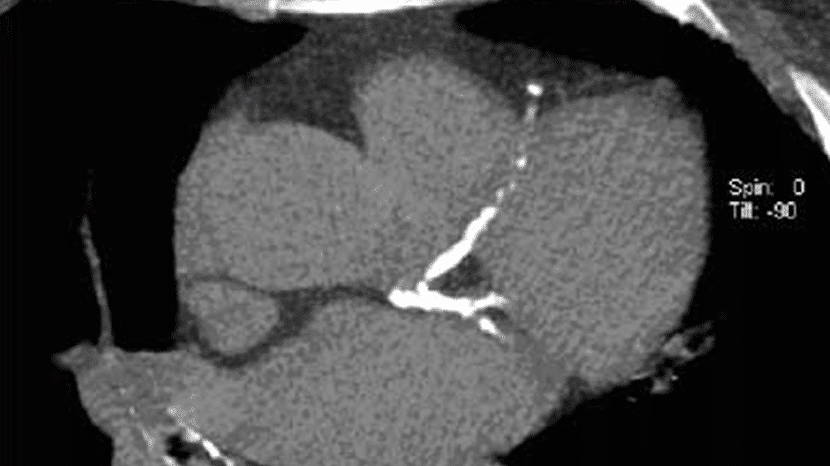
Men’s Health Screenings at ARA
Catching a health issue early really makes a big difference in how it’s treated. So, screenings really are very important because we have the opportunity to look inside the body when there are no symptoms and catch something early that could be could be dangerous. Early detection can have a positive effect on long-term treatment and prognosis as well as quality and length of life.
In this article, read about:
CT Calcium Scoring for Heart Disease
CT Screening for Lung Cancer
Prostate Cancer Diagnosis
Screening for Osteoporosis in Men
Aortic Aneurysm Screening
Also see the video Dr. John Williams Discusses the Importance of Screenings for Men.
CT CALCIUM SCORING FOR HEART DISEASE
We’ll start with coronary artery disease (CAD) because it’s so prevalent, accounting for one out of every four deaths in the United States each year. CAD is also something we can see through a screening called CT calcium scoring before it even causes symptoms. Looking at the scans below, the one on the left shows a healthy heart without any evidence of the coronary artery plaque that can cause heart attack. The vessels we examine supply oxygenated blood to the heart so it can pump. When they become clogged with plaque over time, the blood supply is lessened and that can create a heart attack. The scan on the right shows extensive calcification in these important blood vessels. This patient has a high likelihood of having a significant narrowing of the coronary arteries. Even though this patient likely has no symptoms, this finding will allow him to work with his cardiologist on a treatment plan that could be life-saving.
Please note: When talking to your health care provider about getting a CT calcium scoring, be sure and discuss any symptoms you may be having, including chest pain or pain in the arms, back neck, jaw, or stomach; shortness of breath; palpitations; nausea; and fatigue.
CT calcium scoring screening for coronary heart disease (heart attack)
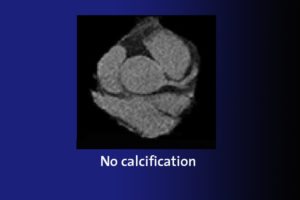
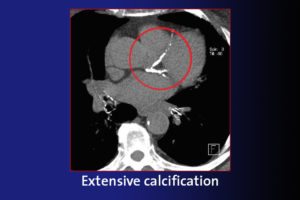
Learn more about CT calcium scoring at ARA.
CT LUNG SCREENING FOR LUNG CANCER
Another important disease to screen for is lung cancer, by far the leading cause of cancer death in the United States for both men and women. It is primarily related to smoking. The examination we do for lung cancer is a CT low-dose lung screening. The high-risk population is patients between the ages of 55 and 75 who have a 30 pack-year history of smoking (the equivalent of a pack a day for thirty years). That’s heavy smoking. If this group of patients gets regular CT lung screenings, they have a twenty percent reduction in mortality versus patients who don’t get the screening. That’s a significant reduction in lung cancer deaths.
Below, we have three images. The one on the left (A), is an initial screening in which the radiologists have seen a nodule that is suspicious, but indeterminant. Patients with this kind of finding are put on a screening schedule to watch for nodule growth and change. This patient did indeed have further growth of the nodule (B) which led to a biopsy and diagnosis of lung cancer. The finding was early so the prognosis was good. In the third scan, you can see an example of what we do not want to find – an advanced cancer that we might only diagnose after the patient presents with pain or a bloody cough. At this point often, unfortunately, the disease may already be systemic and the prognosis is not going to be as good as if you were to catch it early.
CT lung screening for lung cancer
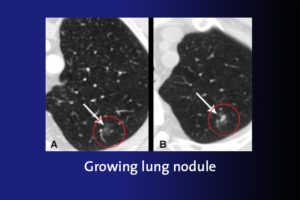
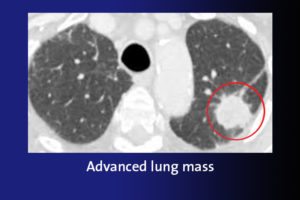
Find out more about ARA’s screening for lung cancer.
PROSTATE CANCER DIAGNOSIS
Prostate cancer is the third leading cause of cancer in men, behind lung and colon. When a doctor suspects prostate problems, we do an MRI for screening which gives us what you see below. On the left, the prostate gland is seen in the circled area. The bright area is what’s called the peripheral zone and is where we concentrate most of our search. The image on the right shows what we’re looking for—a dark area with irregular margins. We bring attention to that and recommend a biopsy for cancer. Even though prostate cancer is common, the prognosis is great when we identify it early, at a point when it’s still confined to the prostate gland and hasn’t spread elsewhere.
Prostate screening
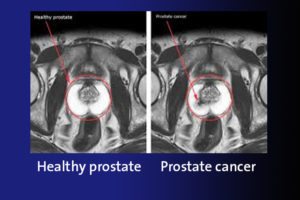
Find out more about ARA’s leading-edge, minimally invasive treatment for enlarged prostate, prostate embolization.
SCREENING FOR OSTEOPOROSIS IN MEN
There’s some awareness about how important osteoporosis screening is for older women, but men need this screening, too, just a little later. At seventy and older, men can also be at risk, especially if they smoke or use alcohol heavily. Bones can get more porous over time as well, which predisposes men to fracture, and a fracture can be catastrophic.
There’s a study called a DEXA bone density scan which is what we recommend to assess bone strength. Typically, we look at the femur/hip and lumbar spine which you see below. A computer analysis of the scan tells us how much bone density is present in comparison to a similar age group and also against a younger cohort. Bone loss is totally painless and invisible from the exterior so this screening is very important. If bone loss is detected, diet, exercise, supplements and medication can make very positive changes.
DEXA scans for osteoporosis
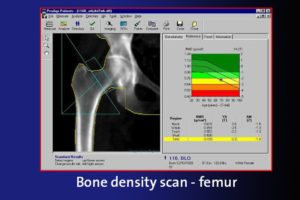
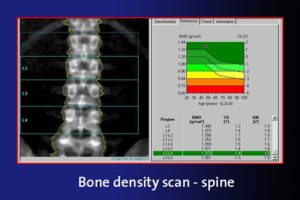
Find out more about ARA’s bone densitometry screening.
AORTIC ANEURYSM SCREENING
Another and more dangerous invisible condition is aortic aneurysm. This is a life-threatening disease in which the vessel walls of the abdominal aorta become weak and balloon. Symptoms include a pulsing feeling in the abdomen, severe sudden pain in the abdomen or lower back, or painful and discolored feet due to material shed from the aneurysm. However, there may not be any symptoms for this condition. Typically, we see this in heavy smokers over 60 who also may have high blood pressure or high cholesterol. When diagnosed early, aortic aneurysm can be treated or even cured with safe and effective procedures. So check with your doctor on your next visit and see if this screening makes sense for you.
Aortic aneurysm – normal/distended
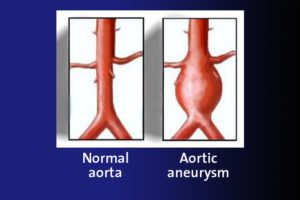
DOES INSURANCE COVER SCREENING?
In general, these screenings are covered by most insurance, depending on your age and risk factors. It makes sense for both the patient and the insurance company to catch these conditions early and treat them before they become more dangerous. You can call ARA at 512-453-6100 to talk to a specialist who can help you determine your coverage.
 Back to Top
Back to Top